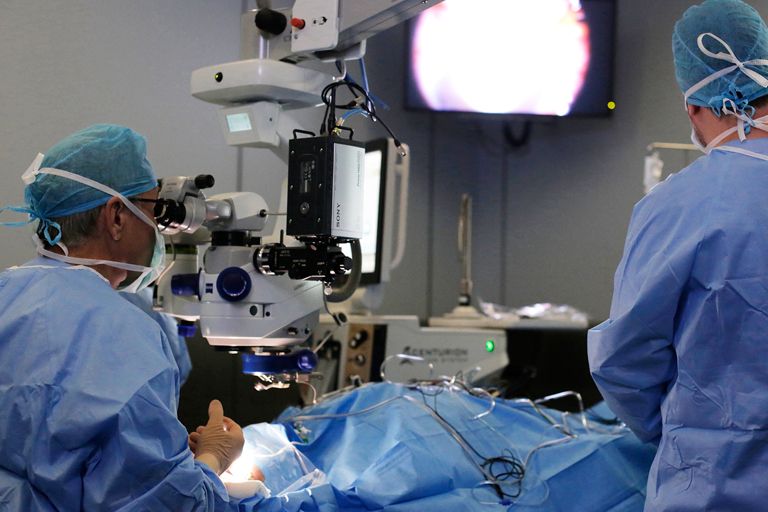
Miranza clinics – a benchmark in the treatment of retinal diseases
At Miranza clinics, we are pioneers in the treatment of retinal diseases in Spain. Find out more about how we treat these diseases at our centres
The retina is the innermost layer of the eyeball, lining the inside of the eye and consisting of a complex network of interconnected cells (some as important as photoreceptors, a type of light-sensitive neurons). The main function of the retina is to turn light stimuli into electrical signals, so that the brain can interpret these stimuli to enable us to see images. This is why any problem in the retina can significantly interfere with our vision.
There are several diseases that can affect the retina. Retinal detachment is one of the main ones, as it is quite common and can have devastating consequences if it is not treated in time and properly. On the other hand, especially from the age of 60 onwards, AMD (age-related macular degeneration) is very common, while diabetic retinopathy is one of the most prevalent causes of visual loss in working age.
Treatment of retinal diseases at our clinics
At Miranza, we have extensive experience in the treatment of retinal diseases. We are pioneers in performing vitrectomies, the main surgery for retinal diseases, in Spain. This technique acts on the vitreous gel that fills the eyeball in order to access the retina and repair its damage, which requires very precise and meticulous surgery.
The experience of our surgeons, together with recent advances, allows us to perform increasingly less invasive surgeries, with smaller instruments, better viewing systems and highly sophisticated technologies for working inside the eye. Thus, we achieve high success rates and minimise the risk of complications, as well as offering greater comfort to our patients, both during surgery and recovery.
Apart from these surgical advances, other treatments we apply at Miranza for retinal diseases have also evolved. This is the case of intraocular injections of drugs that are administered directly into the eye, specifically into the vitreous body, through a very fine needle. There has been a breakthrough in maintaining and restoring vision with this type of therapy, which is constantly being improved with new, more effective and longer-lasting drugs, as the injections have to be repeated on a regular basis.
Finally, the use of laser is another alternative for certain retinal diseases. With a procedure called photocoagulation we burn, in a controlled manner, the affected area of tissue to promote healing and sealing of some lesions.
Other retinal diseases we treat
The treatment chosen in each case will depend on the type of disease and its evolution, as some of them, such as retinal detachment, can only be dealt with through surgery.
Apart from those mentioned, there are other vitreoretinal disorders we treat in a specialised manner at Miranza clinics, with experts in both medical and surgical retina:
- Macular hole
- Epiretinal membranes
- Macular oedema, associated with diabetes or other causes
- Complications of high myopia
- Trauma to the eye fundus
- Tumours
On the other hand, there is a set of hereditary and orphan diseases (retinal dystrophies) which, although they do not yet have an approved treatment, are under investigation. Our team is a benchmark in Spain in terms of clinical and genetic diagnosis, as it is precisely in the genes where the key to future solutions, such as gene therapies, lies. At Miranza’s R&D&I Department, we have projects underway with this type of therapy, as well as with cell therapies.